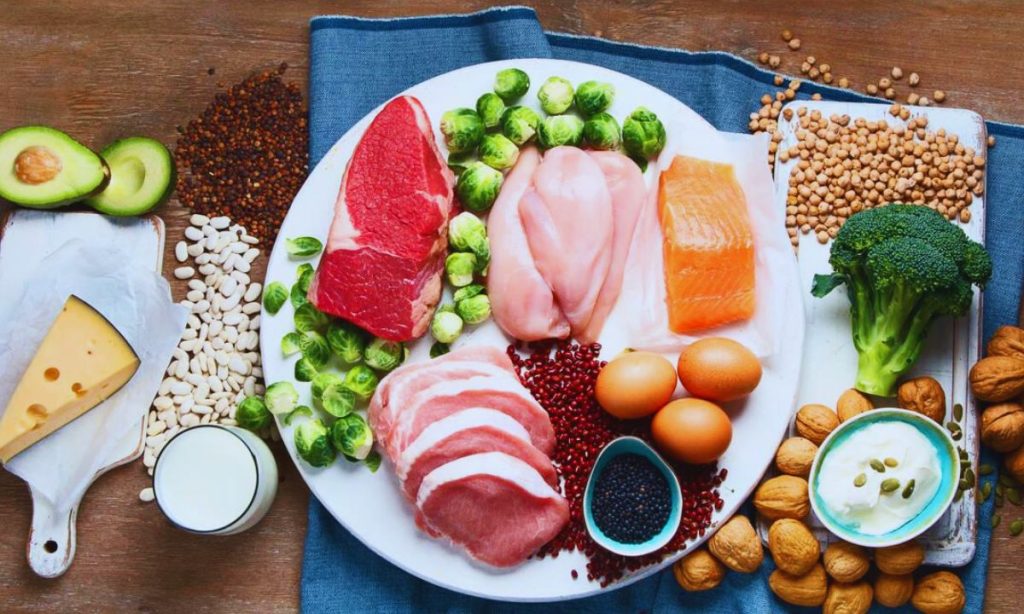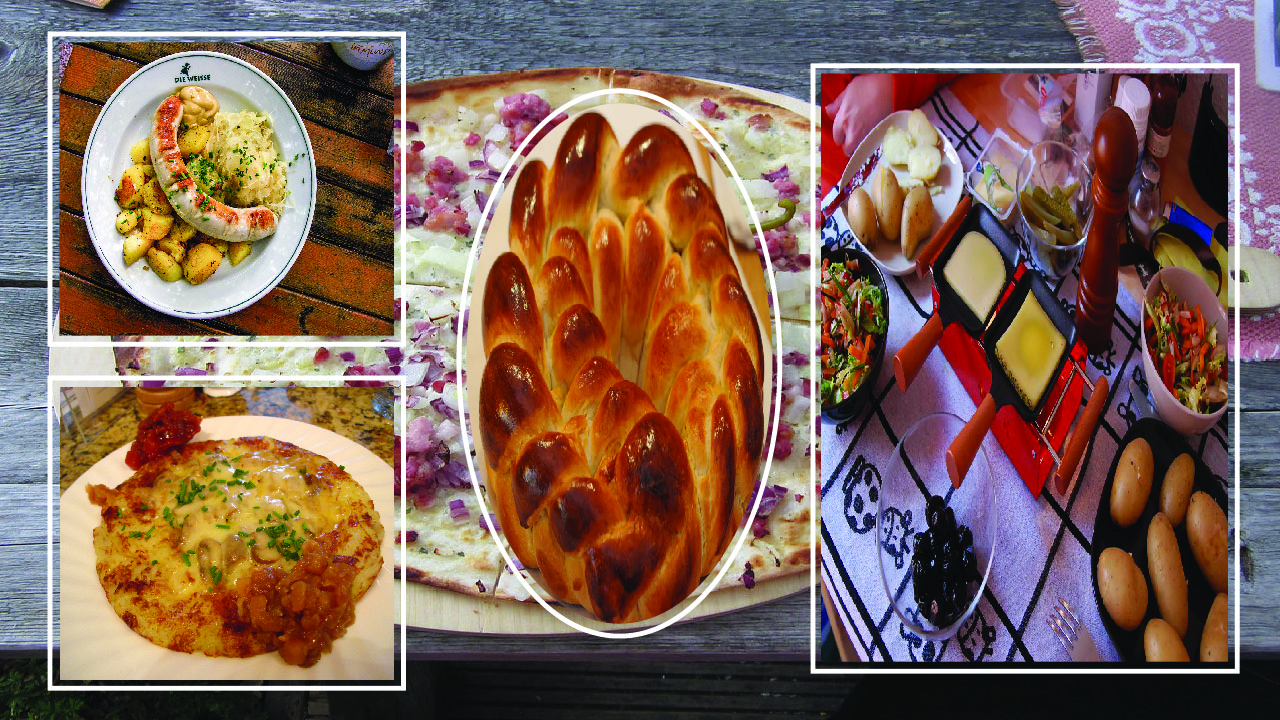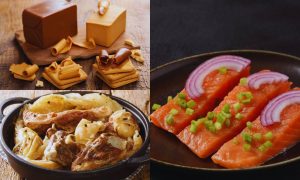In today’s fast-paced world, finding the sweet spot between tasty and nutritious meals can feel like an uphill battle. We all yearn for mouthwatering dishes that don’t require hours in the kitchen or leave us feeling guilty about calorie intake. Enter the world of AirFood recipes – a culinary revolution that’s transforming how we approach cooking, making it quicker, healthier, and undeniably delicious.
Our comprehensive 2024 guide is brimming with AirFood recipes that are not just simple to prepare but also explode with flavors that satisfy cravings without the accompanying guilt. From irresistibly crunchy popcorn to succulent air-fried chicken, we’ve curated a collection of recipes complete with detailed, step-by-step instructions to help you create these delights effortlessly.
Prepare yourself for a gastronomic journey that promises to deliver both health benefits and taste sensations on a single plate!
Understanding AirFood Recipes: A Deeper Dive
AirFood recipes represent a modern approach to cooking that leverages technology to create healthier versions of our favorite foods. At the heart of this cooking method are appliances like air fryers and convection ovens, which use circulating hot air to cook food evenly and with minimal oil.
The Science Behind AirFood Cooking: Air fryers and convection ovens work by circulating hot air around the food at high speeds. This rapid air circulation creates a crispy exterior on foods, mimicking the effect of deep-frying but with a fraction of the oil. The Maillard reaction, responsible for the brown, crispy texture we love in fried foods, still occurs, giving AirFood dishes that satisfying crunch without excessive oil absorption.
Versatility in Cooking: AirFood recipes aren’t limited to traditionally fried items. They encompass a wide range of cooking techniques:
- Air Frying: Perfect for creating crispy textures on foods like chicken wings, french fries, and even vegetables.
- Roasting: Ideal for bringing out natural sweetness in vegetables and creating juicy, flavorful meats.
- Baking: From cakes to bread, air fryers can bake a variety of goods with even heat distribution.
- Grilling: Achieve grill-like results indoors, complete with attractive grill marks and smoky flavors.
- Dehydrating: Make your own dried fruits, vegetables, or jerky with ease.
Health Benefits of AirFood Cooking: A Closer Look
The health advantages of AirFood cooking extend beyond just calorie reduction. Let’s explore these benefits in more detail:
- Significant Calorie Reduction: By using minimal oil, AirFood recipes can cut calorie content by 70-80% compared to traditional frying methods. For instance, a serving of air-fried chicken wings might contain 100-150 calories, while deep-fried wings could pack in 300-400 calories.
- Lower Fat Content: AirFood cooking dramatically reduces the amount of unhealthy fats in your meals. This is particularly beneficial for heart health, as it helps lower LDL (bad) cholesterol levels.
- Retention of Nutrients: The quick cooking times and lower temperatures used in AirFood recipes help preserve heat-sensitive nutrients like vitamin C and some B vitamins. For example, air-fried broccoli retains more vitamin C compared to boiled broccoli.
- Reduced Acrylamide Formation: Acrylamide, a potentially harmful compound formed when starchy foods are fried at high temperatures, is significantly reduced in AirFood cooking. Studies have shown up to 90% less acrylamide in air-fried potatoes compared to deep-fried ones.
- Portion Control: Many air fryers have built-in portion control due to their basket size, naturally encouraging healthier serving sizes.
Top AirFood Recipes for 2024: Detailed Recipes and Nutritional Insights
Let’s dive deeper into some of the standout AirFood recipes for 2024, complete with detailed instructions and nutritional information:
1. Gourmet Air-Popped Popcorn
Ingredients:
- 1/4 cup popcorn kernels
- Optional toppings: nutritional yeast, sea salt, cinnamon, stevia
Instructions:
- Preheat your air fryer to 400°F (200°C).
- Place the popcorn kernels in the air fryer basket.
- Cook for 5-7 minutes, or until popping slows to 2-3 seconds between pops.
- Carefully remove the popcorn and add your chosen toppings.
Nutritional Info (per 2-cup serving, plain): Calories: 60 Fat: 0.7g Carbs: 12g Fiber: 2.4g Protein: 2g
Health Benefits: Popcorn is a whole grain, rich in fiber and antioxidants. Air-popping eliminates the need for oil, making it a low-calorie, heart-healthy snack.
2. Refreshing Celery Juice
Ingredients:
- 1 bunch of celery (about 9-10 stalks)
- 1/2 lemon (optional)
Instructions:
- Wash the celery thoroughly.
- Cut the celery into smaller pieces to fit your juicer.
- Juice the celery, followed by the lemon if using.
- Stir the juice and serve immediately over ice if desired.
Nutritional Info (per 8 oz serving): Calories: 42 Fat: 0.4g Carbs: 9g Fiber: 4g Protein: 2g
Health Benefits: Celery juice is rich in antioxidants and anti-inflammatory compounds. It’s hydrating and may support digestive health and blood pressure regulation.
3. Crispy Air-Fried Vegetables
Ingredients:
- 2 cups mixed vegetables (zucchini, bell peppers, carrots)
- 1 tbsp olive oil
- 1/2 tsp garlic powder
- 1/2 tsp Italian herbs
- Salt and pepper to taste
Instructions:
- Preheat air fryer to 375°F (190°C).
- Cut vegetables into uniform pieces.
- In a bowl, toss vegetables with oil and seasonings.
- Air fry for 10-12 minutes, shaking the basket halfway through.
Nutritional Info (per 1-cup serving): Calories: 75 Fat: 3.5g Carbs: 10g Fiber: 3g Protein: 2g
Health Benefits: This method preserves nutrients while providing a satisfying crunch. The variety of vegetables offers a range of vitamins, minerals, and antioxidants.
4. Gourmet Toasted Sandwich
Ingredients:
- 2 slices whole grain bread
- 2 oz low-fat cheese
- 1/4 avocado, sliced
- 2 slices tomato
- Handful of spinach leaves
- 1 tsp Dijon mustard
Instructions:
- Preheat air fryer to 370°F (188°C).
- Assemble the sandwich with all ingredients.
- Lightly brush the outside of the bread with olive oil.
- Air fry for 5-6 minutes, flipping halfway through.
Nutritional Info (per sandwich): Calories: 340 Fat: 17g Carbs: 35g Fiber: 8g Protein: 18g
Health Benefits: This balanced sandwich provides whole grains, healthy fats from avocado, and a variety of vitamins and minerals from the vegetables.
5. Teriyaki Chicken Wings
Ingredients:
- 1 lb chicken wings
- 1/4 cup low-sodium soy sauce
- 2 tbsp honey
- 1 tbsp rice vinegar
- 1 tsp sesame oil
- 1 clove garlic, minced
- 1/2 tsp grated ginger
Instructions:
- Mix soy sauce, honey, vinegar, sesame oil, garlic, and ginger for the marinade.
- Marinate chicken wings for at least 2 hours.
- Preheat air fryer to 380°F (193°C).
- Air fry wings for 20-25 minutes, turning halfway through.
- Brush with remaining marinade in the last 5 minutes of cooking.
Nutritional Info (per 4 wings): Calories: 280 Fat: 18g Carbs: 8g Protein: 24g
Health Benefits: Air-frying reduces the fat content significantly compared to deep-frying. The marinade provides antioxidants from garlic and ginger.
6. Caramelized Baked Grapefruit
Ingredients:
- 1 large grapefruit
- 2 tsp honey or brown sugar
- 1/4 tsp cinnamon
- Optional: Greek yogurt for serving
Instructions:
- Preheat air fryer to 375°F (190°C).
- Cut grapefruit in half and loosen segments with a knife.
- Drizzle each half with honey and sprinkle with cinnamon.
- Air fry for 8-10 minutes until caramelized.
- Serve warm, optionally topped with a dollop of Greek yogurt.
Nutritional Info (per half grapefruit): Calories: 90 Fat: 0.3g Carbs: 23g Fiber: 3g Protein: 1.5g
Health Benefits: Grapefruits are high in vitamin C and antioxidants. The warm preparation can make it easier for some people to digest.
7. Herb-Roasted Vegetable Medley
Ingredients:
- 2 cups mixed root vegetables (carrots, parsnips, sweet potatoes)
- 1 red onion, cut into wedges
- 2 tbsp olive oil
- 1 tsp dried rosemary
- 1 tsp dried thyme
- Salt and pepper to taste
Instructions:
- Preheat air fryer to 400°F (200°C).
- Cut vegetables into similar-sized pieces.
- Toss vegetables with oil, herbs, salt, and pepper.
- Air fry for 15-20 minutes, shaking the basket every 5 minutes.
Nutritional Info (per 1-cup serving): Calories: 120 Fat: 7g Carbs: 15g Fiber: 3g Protein: 2g
Health Benefits: This colorful medley provides a variety of vitamins, minerals, and antioxidants. Roasting enhances the natural sweetness of the vegetables.
8. Crispy Air-Fried Chicken
Ingredients:
- 4 chicken thighs, bone-in, skin-on
- 1 cup buttermilk
- 1 cup all-purpose flour
- 1 tsp paprika
- 1 tsp garlic powder
- 1 tsp onion powder
- Salt and pepper to taste
- Cooking spray
Instructions:
- Marinate chicken in buttermilk for at least 2 hours or overnight.
- Mix flour with paprika, garlic powder, onion powder, salt, and pepper.
- Dredge marinated chicken in the seasoned flour.
- Preheat air fryer to 380°F (193°C).
- Lightly spray chicken with cooking oil.
- Air fry for 25-30 minutes, flipping halfway through, until internal temperature reaches 165°F (74°C).
Nutritional Info (per thigh): Calories: 280 Fat: 14g Carbs: 12g Protein: 28g
Health Benefits: Air-frying chicken reduces fat content by up to 75% compared to deep-frying while maintaining a crispy texture. The protein content supports muscle health and satiety.
9. Mediterranean Vegetarian Pie
Ingredients:
- 2 cups cooked quinoa
- 1 cup cherry tomatoes, halved
- 1 zucchini, diced
- 1/2 cup crumbled feta cheese
- 1/4 cup kalamata olives, chopped
- 2 eggs, beaten
- 1 tbsp olive oil
- 1 tsp dried oregano
- Salt and pepper to taste
Instructions:
- Preheat air fryer to 350°F (175°C).
- Mix all ingredients in a bowl.
- Transfer mixture to a greased air fryer-safe pan.
- Air fry for 15-20 minutes until set and golden on top.
Nutritional Info (per serving, serves 4): Calories: 250 Fat: 13g Carbs: 25g Fiber: 4g Protein: 11g
Health Benefits: This vegetarian pie is rich in protein from quinoa and eggs, and provides a variety of vitamins and minerals from the vegetables. The Mediterranean ingredients offer heart-healthy fats.
Creating Your AirFood Recipe Cookbook
- Diverse Recipe Selection: Include a wide range of recipes to cater to different tastes and dietary needs. Consider breakfast options, main courses, sides, snacks, and even desserts. Don’t forget to include vegetarian, vegan, and gluten-free options.
- High-Quality Photography: Invest in good lighting and props for your food photography. Consider using a DSLR camera or a high-quality smartphone camera. Natural light often works best for food photography. Style your dishes attractively, using complementary colors and textures.
- Organized Content: Use a consistent format for your recipes, including:
- Recipe title
- Servings and prep/cook time
- Ingredient list
- Step-by-step instructions
- Nutritional information
- Tips and variations
Consider grouping recipes by meal type, main ingredient, or cooking time for easy navigation.
- Clear Instructions: Break down complex techniques into simple steps. Include tips for ingredient prep, such as the best way to cut vegetables for even cooking. Mention visual cues (e.g., “cook until golden brown”) along with cooking times.
- Local and Seasonal Flavors: Research local ingredients and traditional dishes that can be adapted to AirFood cooking. Include information about seasonal availability of ingredients and possible substitutions.
- Health Information: For each recipe, highlight key nutrients and potential health benefits. Include information on how the AirFood cooking method enhances the nutritional value compared to traditional cooking methods.
- Personal Touch: Share the story behind each recipe – whether it’s inspired by travels, family traditions, or creative experimentation. Include tips for customization and serving suggestions.
Air Fryer Tips and Tricks: Include a section on how to get the most out of your air fryer, including:
- Preheating recommendations
- How to arrange food for optimal cooking
- Cleaning and maintenance tips
- Troubleshooting common issues
- Meal Planning and Prep: Offer suggestions for incorporating AirFood recipes into weekly meal plans. Include tips for prepping ingredients in advance and storing leftovers.
- Interactive Elements: If creating a digital cookbook, consider adding interactive elements like clickable table of contents, video demonstrations for complex techniques, or links to related recipes.
Frequently Asked Questions (FAQs)
Q: Can AirFood recipes improve my travel meals?
A: Absolutely! AirFood recipes are ideal for travelers looking to maintain a healthy diet while enjoying local flavors. Many air fryers are compact and portable, making them suitable for use in vacation rentals or RVs. You can easily adapt local ingredients to AirFood cooking methods, allowing you to experience regional cuisines in a healthier way. For instance, you could air-fry local vegetables or create healthier versions of street food favorites.
Q: How can I incorporate local flavors into AirFood recipes?
A: Incorporating local flavors into AirFood recipes is a great way to experience regional cuisines while maintaining a healthier cooking method. Here are some tips:
- Use local spices and herbs to season your dishes.
- Adapt traditional recipes by using the air fryer instead of deep-frying.
- Visit local markets to find fresh, regional ingredients.
- Experiment with local sauces or marinades on air-fried meats or vegetables.
- Try air-frying local fruits for unique desserts.
Q: What makes AirFood recipes healthier?
A: AirFood recipes are considered healthier because they focus on low-calorie, nutrient-dense, and air-based cooking techniques, which retain the natural flavors and nutrients of the ingredients without excessive use of unhealthy fats, oils, or artificial additives. Here’s why they stand out:
- Nutrient Retention: The shorter cooking times and lower temperatures used in air frying help preserve heat-sensitive nutrients like vitamin C and some B vitamins.
- Lower Acrylamide Formation: Air frying produces significantly less acrylamide, a potentially harmful compound formed when starchy foods are cooked at high temperatures, compared to deep frying.
- Versatility for Healthier Choices: Air fryers can be used to cook a wide variety of foods, including vegetables, lean proteins, and even some fruits, encouraging a more diverse and balanced diet.
- Portion Control: Many air fryers have built-in portion control due to their basket size, naturally encouraging more appropriate serving sizes.
- Reduced Trans Fat Intake: By eliminating the need for deep frying in oil, AirFood recipes help reduce consumption of trans fats, which are associated with increased risk of heart disease.
- Lower Calorie Content: Air-fried foods typically contain 70-80% fewer calories than their deep-fried counterparts, supporting weight management goals.
Q: Are AirFood recipes suitable for people with dietary restrictions?
A: Yes, AirFood recipes can be easily adapted for various dietary needs:
- Gluten-Free: Many air fryer recipes are naturally gluten-free, and those that aren’t can often be adapted using gluten-free alternatives.
- Vegan/Vegetarian: Air fryers are excellent for cooking plant-based proteins and vegetables, making them ideal for vegan and vegetarian diets.
- Low-Carb/Keto: Air fryers can be used to cook low-carb alternatives like zucchini fries or keto-friendly proteins.
- Dairy-Free: Most air fryer recipes don’t require dairy, and those that do can often be made with dairy-free alternatives.
- Low-Sodium: You have full control over seasoning in air fryer recipes, making it easy to reduce sodium content.
Always check ingredient labels and adapt recipes as needed to suit specific dietary requirements.
Creating Your AirFood Recipe Cookbook: Additional Tips
- Recipe Testing and Refinement: Before including a recipe in your cookbook, test it multiple times to ensure consistency and accuracy. Note any variations in cooking times or temperatures between different air fryer models.
- Nutritional Analysis: Consider using a professional nutritional analysis service or reliable software to provide accurate nutritional information for each recipe. This adds value for health-conscious readers.
- Air Fryer Comparison Guide: Include a section comparing different air fryer models, discussing their features, capacities, and best uses. This can help readers choose the right appliance for their needs.
- Conversion Charts: Provide charts for converting traditional oven or deep-fry recipes to air fryer methods. Include temperature and time adjustments.
- Ingredient Substitutions: Offer a comprehensive list of ingredient substitutions to make recipes more accessible and adaptable to dietary restrictions or preferences.
- Batch Cooking and Meal Prep: Provide tips on using the air fryer for batch cooking and meal prep, including how to store and reheat air-fried foods for optimal taste and texture.
- Kid-Friendly Recipes: Include a section of kid-friendly AirFood recipes to help families make healthier choices together.
- Multicultural Recipe Selection: Showcase AirFood adaptations of dishes from various cuisines around the world to appeal to a diverse audience and encourage culinary exploration.
- Seasonal Recipe Collections: Group recipes by season, highlighting ingredients that are at their peak during different times of the year.
- Eco-Friendly Cooking Tips: Discuss how AirFood cooking can be more energy-efficient than traditional ovens, and provide tips for reducing food waste and using eco-friendly cleaning methods for air fryers.
Advanced AirFood Cooking Techniques
As you become more comfortable with AirFood cooking, you can explore more advanced techniques:
- Multi-Layer Cooking: Use air fryer racks to cook multiple ingredients at once, creating complete meals in a single cooking session.
- Dehydrating: Many air fryers have a dehydrate function. Explore making your own dried fruits, vegetables, or even jerky.
- Baking: Experiment with baking cakes, breads, and pastries in your air fryer. The circulating hot air can create beautifully browned exteriors.
- Roasting Nuts and Seeds: Use your air fryer to roast nuts and seeds quickly and evenly, enhancing their flavors.
- Smoking: Some advanced users add a small amount of wood chips to their air fryer to impart a smoky flavor to foods like fish or cheese.
Troubleshooting Common AirFood Cooking Issues
Include a section addressing common problems and their solutions:
Food Not Crispy Enough:
- Solution: Lightly spray with oil, increase cooking temperature, or cook for longer.
Uneven Cooking:
- Solution: Don’t overcrowd the basket, shake or flip food halfway through cooking.
Dry Food:
- Solution: Marinate meats before cooking, or brush with oil or sauce during cooking.
Smoke from the Air Fryer:
- Solution: Ensure there’s no excess oil in the bottom of the fryer, and clean it regularly.
Food Sticking to the Basket:
- Solution: Use parchment paper liners or lightly grease the basket before cooking.
Takeaways
As we look ahead to 2024 and beyond, AirFood recipes represent more than just a cooking trend – they’re part of a broader movement towards healthier, more sustainable eating habits. By mastering these techniques and recipes, you’re not only improving your own health but also contributing to a more environmentally friendly way of cooking.
Remember, the key to success with AirFood cooking is experimentation and adaptation. Don’t be afraid to try new ingredients, adjust cooking times and temperatures, and put your own spin on traditional recipes. With practice, you’ll discover endless possibilities for creating delicious, nutritious meals that align with your health goals and culinary preferences.
Whether you’re a busy professional looking for quick, healthy meals, a parent trying to introduce more nutritious options to your family, or a food enthusiast exploring new culinary horizons, AirFood recipes offer something for everyone. So fire up your air fryer, get creative in the kitchen, and enjoy the delicious journey to healthier eating!
























